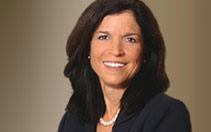Law Change Alert: IRS Limits Income Tax Exclusion on Capital Gains From Homestead Property Sale


Attorney Dorothy L. KorszenDorothy’s practice focuses on trusts and estates, real estate, and business and corporate law.
The Internal Revenue Service (IRS) has long offered an income tax exclusion from capital gains on the sale of homestead property: a single person could exclude up to $250,000 of capital gains from taxable income — $500,000 if married and filing a joint return — when he or she sold the primary residence if he or she had owned and used the property for two years out of the last five years. Internal Revenue Code § 121.
To qualify, the taxpayers must have sold their principal residence (read: the home where they spent the majority of time), and they must have owned and used that property as their principal residence for two of the last five years. If the seller met the IRS’s rules, they would not pay capital gains tax on $250,000 of gain ($500,000 if they are married and file a joint income tax return) upon the sale of their primary residence.
This year, Congress passed the Housing Assistance Tax Act of 2008, P.L. 110-289. This Act limits the exclusion for homestead property sold after December 31, 2008, for certain periods of “nonqualified use.” Nonqualified use is any time during the last two out of five years when the property was not used as the taxpayer’s primary residence.
Often, investors or vacationers visit beautiful, sunny Florida, purchase property here, and use it as investment property or vacation home. Later, perhaps after retirement, they may move to Florida for good and convert the property to their primary residence. This new restriction may limit the exclusion from income tax on capital gains realized from such sales.
For sales after December 31, 2008, the two-out-of-five rule will not be considered met for periods of nonqualified use. Subject to some restrictions, IRS rules allocate gain to periods of nonqualified use based on the ratio of nonqualified use time to the total time the taxpayer has owned the property. To illustrate:
Ratio for Nonqualified Use= Nonqualified Use Time Time Property was Owned by Taxpayer
Both the prior law and these new provisions include exceptions for periods of temporary absence (not to exceed an aggregate of two years) due to change of employment, health conditions, or unforeseen circumstances as may be specified by the Secretary of the IRS. In addition, under the new provisions, there is an exception from nonqualified use time for any portion of the five year period that falls after the date that the taxpayer or the taxpayer’s spouse stopped using the property as a principal residence. It is expected that the IRS will allow time for nonqualified use to be expressed in days or months as it is for the two-out-of-five year calculation.
As an illustration of these new provisions, say a single person bought a house in 2009 for $400,000, then used it as rental property for two years, after which he converted it to his principal residence. After two years he moves out, and then a year later he sells the home for $700,000. In this example, he has realized a $300,000 gain, he has used this property as his primary residence for two of the last five years, and he has owned the property for five years. Under the old law, he would have been able to exclude paying income tax on $250,000 of the capital gain because he had owned and used the property as his principal residence for two out of the last five years.
Under the new law, 40% of the $300,000 gain ($120,000), representing his 2 years of “nonqualified” use as a rental property, divided by the five years he has owned the property, would not be allowed as an income tax exclusion from capital gain tax, leaving the remaining $180,000 gain as an allowable exclusion. So, this taxpayer would pay capital gains taxes on an additional $70,000 of gain, at the current long term capital gains rate of 15%, for a tax due in the amount of $10,500.
Another example of nonqualified use could be the time a buyer spends remodeling a property before moving in and making it his primary residence. If, instead of renting the property to tenants, the taxpayer in the prior example was remodeling the home for the first two years, the same result would apply.
The earlier IRS rule and these new changes include several exceptions and additional provisions. Your tax advisor and your attorney can advise you how this law will apply to capital gains on the sale of your home to ensure that you do not face an unexpected surprise in your tax bill.
